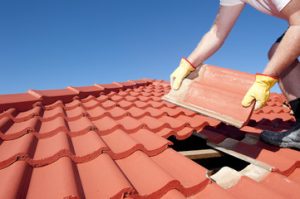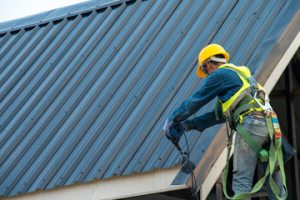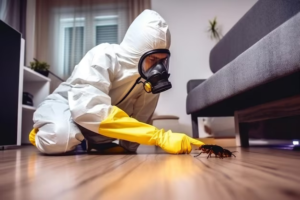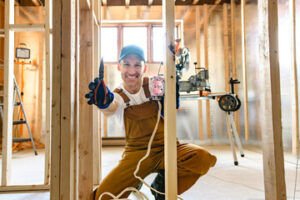A day spent wandering antique shops and malls is a treasure hunt that many people love. The inventory at these unique venues changes regularly, so it is a good idea to visit often.
Vintage furniture consistently ranks as one of the top-selling categories at these types of venues. These pieces add character to a home and can be used for years to come. Visit https://www.gognasrl.it/antiquariato/acquistiamo-in-tutta-italia/stime-perizie-valutazioni-antiquariato-antichita-a-roma-lazio/ to learn more.

Vintage furniture adds character and personality to a home that’s often missing in modern designs. It can also be more affordable than the newer, mass-produced pieces available in most stores. For example, a well-made, solid-wood dresser from the 1920s can cost less than a modern-looking version with only veneer and particleboard. Plus, it’s likely to last longer than the trendy stuff you can buy today.
Before shopping for antique furniture, decide what style you want to go for and take measurements of the space you’ll be using it in. Then stick to your plan while shopping so you don’t end up with a piece that doesn’t fit or one that is too large for the space. It’s also a good idea to rent or borrow a truck if you’re buying a larger piece of furniture to transport it home.
Many people misunderstand the terms “antique” and “vintage” when it comes to furniture, which can cause confusion when purchasing. While some dealers may use the terms interchangeably, they are different things. An antique is defined as anything over 100 years old. A vintage piece is anywhere between 80 and 100 years old.
To identify vintage furniture, check the wood for identifying marks or details like hand-cut dovetail joints and mortise and tenon construction. Other signs of quality include curved or inlaid woodwork, such as marquetry, and brass mounts on the feet or handles. Antique pieces will usually have a patina, which is a natural coloration that forms over time from metals, wood and other materials as they are exposed to the elements.
Other factors that affect the value of vintage furniture are era and rarity. Furniture from iconic designers or manufacturers will generally be priced higher than those made by lesser-known makers. Also, the condition of a piece can increase or decrease its value. Minor wear and tear is expected, but extensive damage can significantly devalue a piece.
It’s also important to remember that trends in vintage furniture evolve just as quickly as they do with new furniture lines. Look for furniture in an enduring design that won’t date as quickly as those fads of the day, or you could be stuck with a brown, floral-print sofa that will be relegated to the thrift store floor next year.
Vinyl Records
Many people are drawn to vinyl records for their rich, warm sound. They also offer a more tactile experience that’s hard to replicate with digital music. Whether you’re collecting for nostalgia or seeking a rare find, there are plenty of opportunities to sift through old vinyl at local antique shops. However, not all vinyl is created equal. Understanding the different types of vinyl can help you decide which ones to buy and which ones to pass on.
Most vinyl records are made of black, but sometimes they’re produced in bright colors for aesthetics or promotional purposes. This type of vinyl is typically not as collectible as black vinyl, but it’s still worth checking for when crate-digging at antique stores.
Another important way to distinguish one type of vinyl from another is by its playback speed, measured in revolutions per minute (RPM). This usually correlates with record size — larger records have faster RPM — but it’s not always the case. A quick look at the dead wax area of a vinyl record should reveal this information, which is vital to collectors.
A unique identifier etched into the dead wax of a vinyl release, used for cataloguing and inventory purposes. This identifying mark is often important to collectors, and it can make the difference between a common vinyl release and an exclusive edition that increases in value over time.
Occasionally, a vinyl record will feature images embedded in the playing surface, which makes it more visually appealing. These records aren’t as common as black vinyl, but they’re worth looking for if you want to add some extra flair to your collection.
Despite their recent resurgence, vinyl records are not as easy to come by as they once were. You’ll need to keep an eye out for new releases at your local antique shop, as well as attend record fairs or other music events to score some rare finds. Aside from ensuring that you have an eclectic selection of vinyl, attending these events can also give you a chance to meet other collectors and discover some hidden gems.
Home Decor
Antique pieces can add so much to a home’s design aesthetic, adding character and a sense of history. Whether it’s a boldly painted dresser or a wood-panel floor screen, antique room decor can transform the look of a space with its rich details and unique charm.
While trends do come and go, certain vintage pieces will always be in style. Here are a few things you should keep an eye out for when shopping for home decor at an antique shop.
Choosing the right antique home decor is all about finding a style that fits with your personal taste. If you’re drawn to rustic design, a handmade crate can make the perfect accent piece for a living room or bedroom. If you prefer a more refined aesthetic, a vintage-inspired lamp can provide a sophisticated look to any space.
Another way to find the right antique home decor is to visit a vintage-themed marketplace. These websites offer a vast selection of preowned furniture and home accents that can add an elegant, one-of-a-kind feel to any space. Some of these websites also allow you to search by a particular style, such as mid-century modern or rustic farmhouse, to help you find the best options for your taste.
If you’re looking for the perfect piece of antique home decor to complement a specific style, you can often find it at an Etsy marketplace. Popular sellers like Gallivanting Girls offer a wide selection of vintage and antique items that span decades and design styles. This Brooklyn-based shop features everything from Danish Modern armchairs to ’60s porcelain hanging lanterns.
Other sites, such as the online store of Golden Lotus, specialize in a specific genre of home decor. If you’re in the market for Asian-inspired accents, this popular seller can provide you with a variety of beautiful and useful items. From rattan ring stands to hang kitchen towels on, to Asian-inspired cookware and utensils, this Etsy seller can help you upgrade your home’s design with the perfect finishing touch.
While it’s possible to find a few special pieces of vintage home decor at most local antique shops, an actual mall is the best place to shop for antique room furniture and accents. These locations typically feature multiple dealers in one large space, allowing shoppers to browse for their ideal home decor from different stalls. Many of these spaces also partner with movers and delivery services, which can be a lifesaver if you’re dealing with larger pieces of furniture.
Sustainability
When people think of sustainability, they often associate it with environmentalism and protecting the planet from pollution. However, there are many facets to the concept that are equally important. At Penn State, we see sustainability as a holistic concept that encompasses human and ecological health, racial equity and social justice, secure livelihoods, and well-being for all now and in the future. This understanding is reflected in our approach to sustainability in the STARS rating system.
Upcycling old furniture and even restoring treasures found in other people’s trash – also known as dumpster diving – is one way that vendors at antique malls are promoting sustainability. Many of these items would otherwise end up in landfills, where they will remain forever.
Another way that antique malls are promoting sustainability is by helping to keep local economies vibrant and providing jobs. This is done by attracting visitors to the area and encouraging them to shop, dine, and stay for longer periods of time. These activities can also help to reduce carbon emissions, which are harmful to the environment.
Some of the best-selling items at antique malls are vintage clothing and accessories, which offer a unique style that is often more durable than modern clothing. These items are also a great alternative to fast fashion, which is often made from less sustainable materials and is detrimental to the environment.
While there are many benefits to buying and selling vintage goods, it can be difficult for new dealers to succeed without the proper guidance and training. Trying to learn the ins and outs of the business on your own can be time consuming, frustrating, and ineffective. This is because the Internet is full of contradictory ideas and lessons from beginners, who more often than not are sharing incorrect information.
In order to avoid these mistakes, aspiring vintage and antique dealers should seek out a comprehensive, proven business course that can teach them the ins and outs of the industry. This way, they can avoid the pitfalls that many people encounter and have a much higher chance of success.




